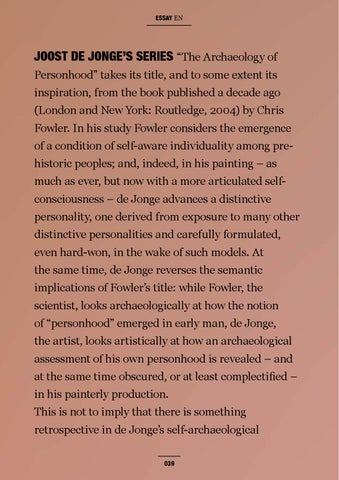ESSAY EN
JOOST DE JONGE’S SERIES “The Archaeology of Personhood” takes its title, and to some extent its inspiration, from the book published a decade ago (London and New York: Routledge, 2004) by Chris Fowler. In his study Fowler considers the emergence of a condition of self-aware individuality among prehistoric peoples; and, indeed, in his painting – as much as ever, but now with a more articulated selfconsciousness – de Jonge advances a distinctive personality, one derived from exposure to many other distinctive personalities and carefully formulated, even hard-won, in the wake of such models. At the same time, de Jonge reverses the semantic implications of Fowler’s title: while Fowler, the scientist, looks archaeologically at how the notion of “personhood” emerged in early man, de Jonge, the artist, looks artistically at how an archaeological assessment of his own personhood is revealed – and at the same time obscured, or at least complectified – in his painterly production. This is not to imply that there is something retrospective in de Jonge’s self-archaeological 039
